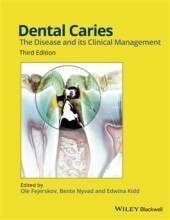Summary: Thema 2.1
- This + 400k other summaries
- A unique study and practice tool
- Never study anything twice again
- Get the grades you hope for
- 100% sure, 100% understanding
Read the summary and the most important questions on Thema 2.1
-
1 Week 1
-
1.1 Most important things week 1
-
How to recognize a MPE?
Maculopapula erythema is recognized by >90% of the body that is erythemous with muculas and papules all over the body. You can recognize it due to itch, it starts proximally. -
How to recognize DRESS?
Drug reaction witheosinophil and systemic symptoms is aworse-case scenario thanMPE . It is a type4b reaction . It includes facial edema andlymphadenopathy . -
How to recognize AGEP?
: acute generalyzed exanthemotous pustulosis. Neutrophil reaction type 4d, that involved pustules all over the body. A lot of neutrophils and the pustules are sterile. -
How to recognize stephens johnsen syndrom/TEN
Mucosal ulcers, blisters and painful skin. -
2 Week 2
-
2.1 Lecture introduction joint probelems
This is a preview. There are 3 more flashcards available for chapter 2.1
Show more cards here -
Name the typical presentation of arthritis.
Common signs of arthritis include:- Joint pain and tenderness
- Swelling and inflammation
- Stiffness, particularly in the morning or after periods of inactivity
- Reduced range of motion
- Warmth or redness over affected joints
- Fatigue and general malaise, night sweats.
- CRP and ESR are elevated and there is anemia due to less EPO production.
Symptoms can vary depending on the type of arthritis. -
Which joint distribution from left to right fits specific diseases and why.
Left; symmetric, wrist, smaller hand and feet joints. Lumbar and thoracic vertebras not involved, while the C1 and C2 are.
Middle : asymmetric; one wrist and ankle. Could be psoriatic arthritis.
Right: Ankylosing spondylitis. Lumbar and thoracic involvement. -
Name some typical features in Rheumatoid arthritis and what are some extra-articular manifestations.
Involvement of thePIP ,MCP , andMTP joints . The wrist could be involved as well; often it issymmetrical . Thecervical vertebra's onlevel 1 and 2 could be involved. Themorning stiffness > 1 hour. 50% haveRF andanti-CCP. The general age ofonset is between 40-60 years old. More commonamongst woman .
Extra-articular manifestations are nodules (subcutaneous or in the lungs) ; vasculitis (vessel wall inflammation), serositis (pleuritis, pericarditis). Pathogenesis due to IL6 and TNFalpha. Polyarthritis. -
Name some typical features in psoriatic arthritis.
Asymmetric, involvement of the wrist or ankle. Nail lesions, scaling, stretch side of the elbow and knees. -
Name some typical features in ankylosing arthritis
Age of onset is around 20-30. Often involvement of the spine (lumbar or thoracic). -
How can you differentiate between osteoarthritis and rheumatoid arthritis.
Morning stiffness is osteoarthritis is less than 30 minutes in osteoarthritis.
- Higher grades + faster learning
- Never study anything twice
- 100% sure, 100% understanding
































